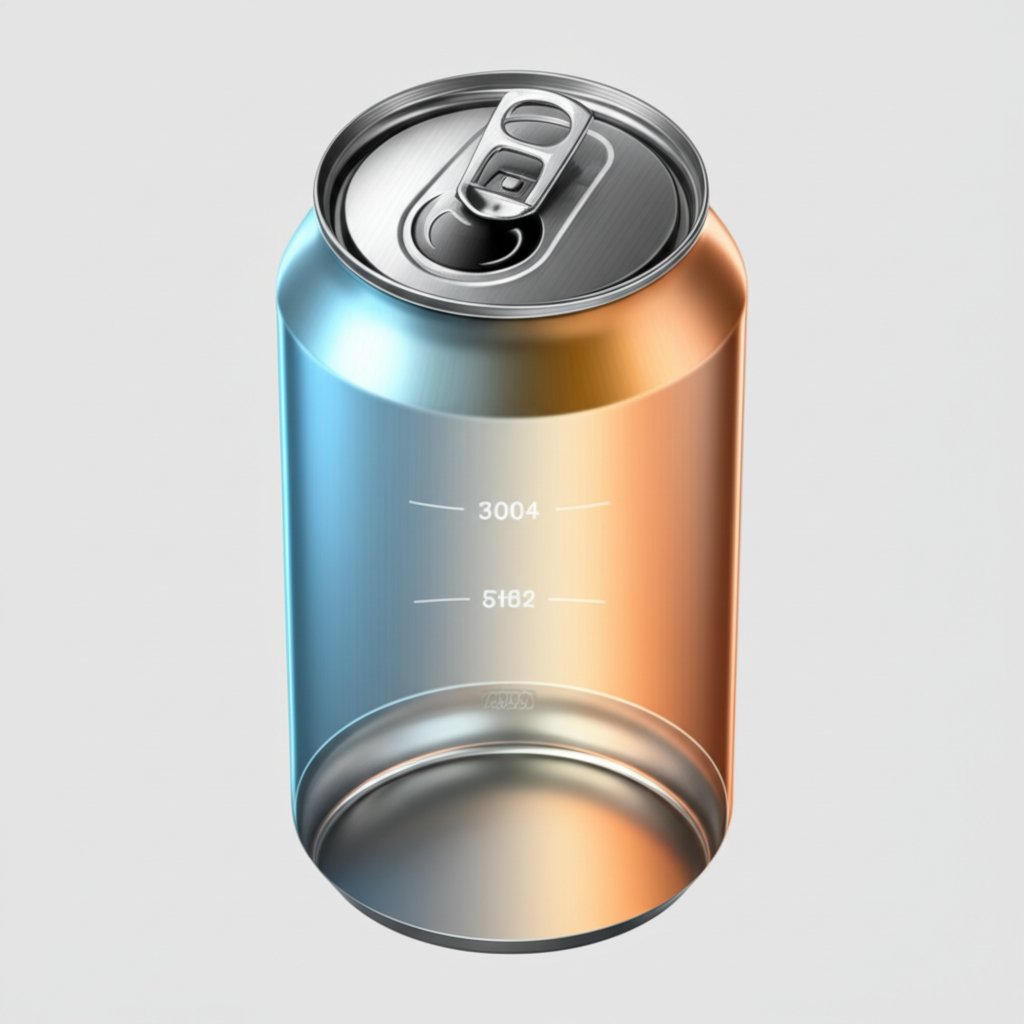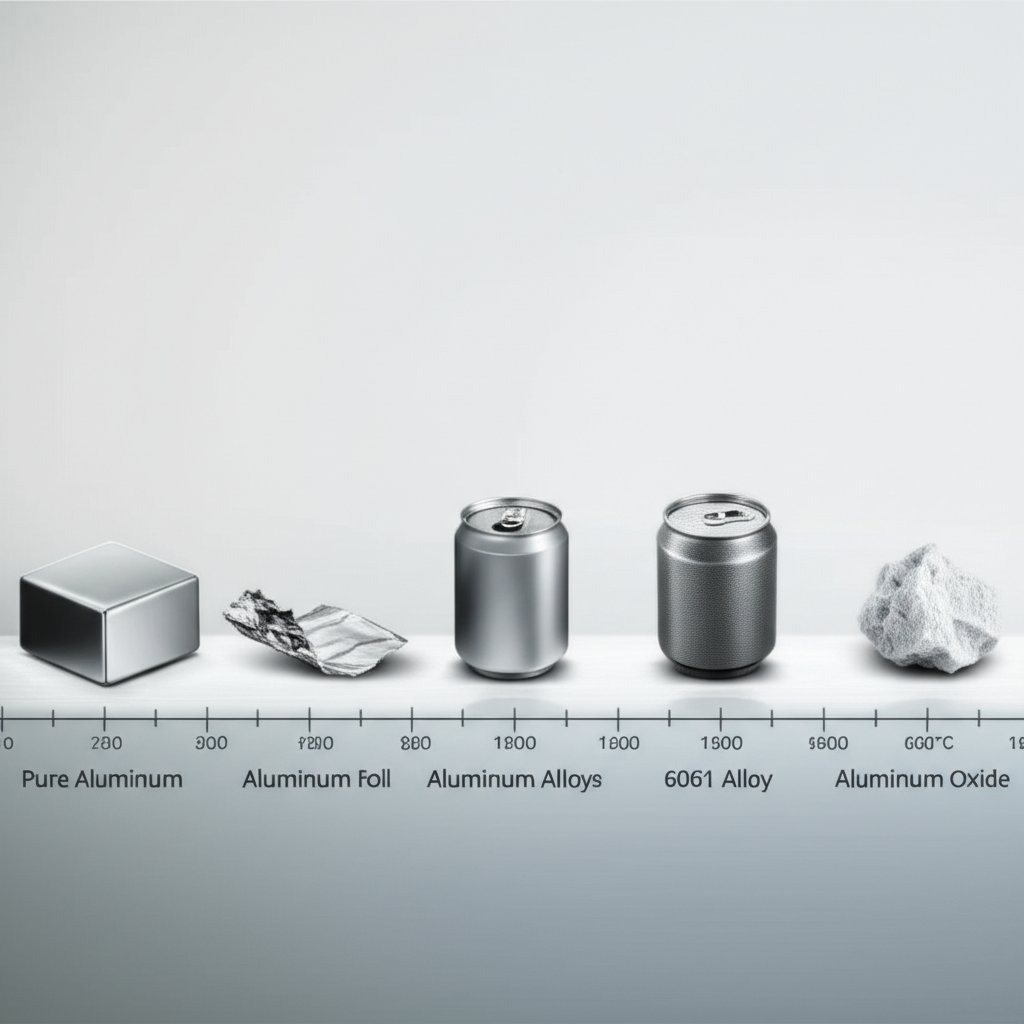
Have you ever wondered what happens to a soda can or a roll of aluminum foil when exposed to intense heat? The answer lies in a fundamental property known as the melting point. For aluminum, this property is more than just a number—it’s a key factor that shapes how this versatile metal is processed, used, and recycled across countless industries.
What is a melting point? In simple terms, the melting point is the temperature at which a solid becomes a liquid. For metals like aluminum, this temperature marks the threshold where their internal atomic structure breaks free from its rigid arrangement, allowing the material to flow and be reshaped. Sounds complex? Imagine ice turning into water—except, in this case, it’s a silvery metal with unique properties.
This variability is more than academic—it directly impacts how aluminum is cast, welded, or recycled. For example, the melting point of aluminum influences the energy required for manufacturing and the choice of processing methods in industries ranging from aerospace to packaging.
What’s ahead in this guide? In the sections that follow, you’ll discover:
By understanding the nuances of the melting point of aluminum, you’ll gain insights into its role in modern engineering, manufacturing, and even recycling. Ready to unlock the science behind one of the world’s most important metals? Let’s dive in.

When you ask, “What is the melting point of aluminum?” the answer seems straightforward—until you look a little closer. For pure aluminum, the melting point is a precise, scientifically recognized value: 660.3°C (1220.5°F). But what makes this number so important, and why does purity play such a critical role?
Imagine trying to melt a block of ice versus a slushy snowball filled with dirt and salt. The ice melts at a predictable temperature, but the snowball turns to slush at a range of temperatures because of its impurities. The same principle applies to metals. High-purity aluminum—that is, aluminum that is 99.99% pure or higher—melts at a consistent, sharply defined temperature. This is the value used in scientific references and engineering standards.
Purity is crucial in applications where precise control over the aluminum melt point is needed—think aerospace components, high-precision electronics, or laboratory research. Even trace impurities can disrupt the atomic structure, leading to unpredictable melting behavior.
Another key detail: the melting point of aluminum is measured under standard atmospheric pressure (1 atmosphere, or 101.325 kPa). Under these normal conditions, the value remains consistent. However, if you change the pressure—say, by melting aluminum in a vacuum chamber or under high pressure—the melting point can shift slightly. For most everyday and industrial uses, though, the standard value is what matters.
So, what’s really happening as aluminum reaches its melt point? At the atomic level, aluminum is made up of tightly packed atoms arranged in a face-centered cubic (FCC) crystal structure. As you heat the metal, the atoms vibrate more vigorously. When the temperature hits 660.3°C, the thermal energy is enough to break the bonds holding the atoms in their fixed positions. Suddenly, the rigid structure collapses, and the atoms can move freely—transforming solid aluminum into a silvery, flowing liquid.
This transformation is the foundation for casting, welding, and recycling aluminum. It’s also why the aluminum melting point is a fundamental property in engineering and manufacturing.
Now that you know the official melting point and the science behind it, let’s see how this value translates across different temperature scales—and why that matters for global industries and technical documentation.
When you’re working with aluminum in different industries or locations, you’ll quickly notice that the aluminum melting point temperature isn’t always listed in the same unit. Sometimes it’s in Celsius, other times Fahrenheit, or even Kelvin. Why does this matter? Imagine an engineer in Europe using Celsius, while a manufacturer in the U.S. relies on Fahrenheit—misunderstandings could lead to costly mistakes. That’s why knowing how to convert and compare these values is so important.
Let’s break it down. The melting point of aluminum in Celsius is the most commonly reported value, especially in scientific and engineering contexts. But global industries often require quick conversions between units. Here’s a simple table for reference:
| Unit | Melting Point |
|---|---|
| Celsius (°C) | 660.32 |
| Fahrenheit (°F) | 1220.58 |
| Kelvin (K) | 933.47 |
Need to switch between Celsius, Fahrenheit, and Kelvin? The process is easier than you might think. Here are the standard formulas you can use:
For example, to convert the aluminum melting point in Celsius (660.32°C) to Fahrenheit:
And to convert Celsius to Kelvin:
Whether you’re preparing technical documentation, ordering materials from overseas, or calibrating equipment, using the correct aluminum melting point temperature ensures consistency and safety. In industries like aerospace or electronics, even a small error in temperature conversion could affect product quality or process efficiency.
Now that you know how to express and convert the melting point of aluminum in Celsius, Fahrenheit, and Kelvin, you’re better equipped for global collaboration and technical precision. Next, let’s explore how this melting point applies to real-world aluminum products, starting with something as familiar as kitchen foil.
Ever wondered why your aluminum foil stays intact in a hot oven, but seems to shrivel or break down when exposed to a direct flame? The answer lies in the science behind the melting point of aluminum foil—a topic that combines everyday kitchen experiences with fascinating material science.
At first glance, you might think that the ultra-thin sheets of foil would melt at a lower temperature than a solid block of aluminum. But here’s the surprising truth: aluminum foil melting point is virtually identical to that of pure aluminum metal. In fact, both transition from solid to liquid at approximately 660°C (1220°F). This consistency exists because most kitchen and industrial foils are made from high-purity aluminum—typically 99% or greater—or from alloys with only trace additions of other elements.
So, whether you’re wrapping leftovers or building insulation, the foil’s melting point is determined by its composition, not its thickness.
Imagine baking potatoes at 400°F (about 200°C)—that’s far below the melting point of aluminum foil. Even most pizza ovens can’t reach the temperatures required to liquefy aluminum. What you might notice instead is that foil can discolor, wrinkle, or become brittle if exposed to open flames or harsh chemicals. This isn’t melting, but rather oxidation or physical changes due to extreme conditions.
In practical terms, you’ll rarely encounter conditions in everyday life where foil truly melts. It’s more likely to oxidize or degrade in a direct flame before you see it pool into a liquid.
The aluminum foil melting point is essentially the same as that of pure aluminum—around 660°C (1220°F). Its thinness makes it sensitive to heat, but doesn’t change its intrinsic melting behavior. This stability is why aluminum foil remains a reliable material for cooking, packaging, and insulation, even in high-temperature environments.
Curious how alloying elements in products like beverage cans affect their melting behavior? Next, we’ll explore how aluminum alloys—like those in cans—introduce new melting ranges and practical considerations.

When you toss an empty soda can into the recycling bin, have you ever wondered what happens when it’s melted down? Unlike pure aluminum or simple foil, beverage cans are crafted from specialized alloys—each selected for a reason. This choice directly impacts the melting point of aluminum cans and their performance during manufacturing and recycling.
It might seem simpler to use pure aluminum, but real-world demands call for more than just a basic metal. Cans need to be lightweight, strong enough to withstand internal pressure, and resistant to corrosion from acidic drinks. To achieve this, manufacturers use specific alloys for different parts of the can:
Each alloy is chosen to balance strength, ductility, and corrosion resistance, ensuring the can can be formed, filled, and opened without failure (ScienceDirect).
Here’s where it gets interesting: pure aluminum melts at about 660°C (1220°F), but adding manganese, magnesium, or other elements changes the melting behavior. Instead of a single, sharp melting point, alloys have a melting range—a temperature window where the metal transitions from solid to liquid.
These ranges are slightly lower than pure aluminum, mainly due to the effects of alloying elements which disrupt the regular atomic structure and lower the onset of melting.
Sounds complex? Here’s the practical reason: the can body must be easily drawn and ironed into a thin, seamless cylinder—so it needs to be ductile yet strong. The lid, on the other hand, requires higher strength to withstand the pressure from carbonated drinks and to securely hold the pull-tab. By tailoring the alloy for each part, manufacturers optimize both performance and material efficiency.
| Can Component | Typical Alloy | Melting Range (°C) | Melting Range (°F) |
|---|---|---|---|
| Body | 3004 | 630–655 | 1166–1211 |
| Lid | 5182 | 625–650 | 1157–1202 |
Because the melting point of aluminum cans is a range—not a fixed value—recyclers and manufacturers must carefully control furnace temperatures. Too low, and the alloy won’t fully melt; too high, and energy is wasted. Understanding these melting ranges ensures efficient recycling, high-quality casting, and reliable new products.
Next, we’ll explore how alloying elements in other common aluminum products—like the popular 6061 alloy—create even broader melting ranges and unique engineering possibilities.
When you hear that aluminum melts at 660°C, it sounds simple—until you work with real-world materials. In practice, most aluminum products are not pure metal, but alloys blended with elements like magnesium, silicon, or manganese. This raises an important question: How does alloying change the aluminum melting point?
Unlike pure aluminum, which has a sharp, well-defined melting point, alloys melt over a temperature range. Sounds complex? Here’s why: each alloying element disrupts the uniform atomic structure of pure aluminum, introducing different types of bonds and microstructures. As a result, some parts of the alloy begin to liquefy at a lower temperature (solidus), while others remain solid until a higher temperature (liquidus) is reached. This is why, if you heat up a block of 6061 aluminum, you'll notice it softens and partially melts before becoming fully liquid.
Let’s break down the melting behavior of some of the most widely used aluminum alloys. These are the materials you’ll encounter in everything from construction beams to bike frames and automotive parts:
Imagine you’re designing a lightweight rail transit part or a custom extrusion for a curtain wall system. If you don’t know the exact aluminum alloy melting point, you could overheat the material during welding or casting, leading to defects or wasted energy. Each alloy’s melting range guides engineers and manufacturers in:
For example, the melting point of aluminum-6061 (and especially the melting point of 6061 T6 aluminum after heat treatment) is a crucial parameter in the production of high-strength, lightweight frames for vehicles and architectural systems. Because 6061 is both strong and easy to extrude, it’s often the first choice for demanding applications.
When it comes to large-scale projects—think rail transit, new energy vehicles, or advanced building facades—precision in controlling alloy melting behavior is non-negotiable. That’s where manufacturing expertise makes all the difference. Shengxin Aluminum stands out with advanced extrusion lines (up to 5,500 tons), state-of-the-art surface finishing, and deep processing capabilities tailored to the unique melting characteristics of alloys like 6061, 3003, and 5052. Their attention to alloy composition and heat treatment ensures that every profile meets strict industry standards for strength, formability, and thermal performance.
By understanding and leveraging the specific melting ranges of each alloy, Shengxin Aluminum helps clients achieve the optimal balance of durability, weight, and cost—whether for energy-efficient curtain walls, high-speed rail components, or next-generation electric vehicles.
Curious how alloying elements specifically alter melting behavior at the microscopic level? In the next section, we’ll break down the science of solidus and liquidus temperatures, and why alloys never melt all at once.
When you hear that aluminum melts at 660°C, it’s tempting to think every aluminum product turns to liquid at that exact temperature. But step into a real-world foundry or fabrication shop, and you’ll quickly notice: most aluminum alloys don’t melt at a single, sharp point. Instead, they transition from solid to liquid over a range of temperatures. Why does this happen—and what do terms like solidus and liquidus actually mean?
Imagine heating a block of pure aluminum. As soon as you reach its melting point, it suddenly transforms from solid to liquid. But if you heat an aluminum alloy—say, one used for aircraft parts or beverage cans—you’ll see it begin to soften and partially melt before it becomes fully liquid. This is because alloys contain other elements (like copper, magnesium, silicon, or zinc) that disrupt the regular atomic structure of pure aluminum, changing how the metal behaves as it’s heated.
Between these two points, the alloy exists in a “mushy” state—a mix of solid and liquid phases. The difference between solidus and liquidus is called the melting range. The wider this range, the more gradual the melting process.
So, what happens when you add other elements to aluminum?
Each alloying element changes the atomic interactions within the metal, resulting in a unique melting profile. Some elements, like copper and silicon, create eutectic mixtures with aluminum—these have their own distinctive (and often lower) melting points.
When you’re casting, welding, or recycling aluminum alloys, understanding the melting range is critical. Here’s why:
The aluminum alloy melting point isn’t a single number—it’s a range, shaped by the type and amount of alloying elements. This melting range, defined by the solidus and liquidus temperatures, is a crucial parameter in every stage of aluminum processing. Whether you’re designing a lightweight car component or recycling beverage cans, knowing how and why alloys melt over a range helps you achieve better quality, efficiency, and safety.
Next, we’ll see how these principles explain the extraordinary melting point of aluminum oxide—a compound that’s even more heat-resistant than metallic aluminum itself.

When you picture aluminum, you might think of foil, cans, or lightweight frames. But what if you needed a material that could withstand even more heat—far beyond what metallic aluminum or its alloys can handle? Enter aluminum oxide (Al2O3), a ceramic compound with a melting point that leaves regular aluminum in the dust.
The aluminum oxide melting point is exceptionally high—typically around 2072°C (3762°F) (Wikipedia). That’s more than three times hotter than the melting point of pure aluminum metal! But what gives aluminum oxide such remarkable heat resistance?
Imagine you’re designing a furnace lining, a spark plug insulator, or a cutting tool that needs to operate in extreme temperatures. The melting point aluminum oxide makes it a go-to material for these high-heat environments. Here’s how it’s used:
Now that you know why aluminum oxide stands out for its extreme heat resistance, let’s compare its melting point side-by-side with pure aluminum, alloys, and everyday items to see just how dramatic these differences are.

When you’re selecting the right material for a project—whether it’s a kitchen gadget, a skyscraper façade, or a high-speed train part—you need to know how it will behave under heat. The aluminum melting point is a key factor, but as we’ve seen, it’s not a one-size-fits-all number. So how do pure aluminum, foil, cans, common alloys like 6061, and aluminum oxide stack up against each other? Let’s break it down side-by-side.
To make comparisons easy, here’s a table showing the melting points or ranges for each material, in both Celsius and Fahrenheit:
| Material | Melting Point/Range (°C) | Melting Point/Range (°F) |
|---|---|---|
| Pure Aluminum (99.99%) | 660–660.3 | 1220–1220.5 |
| Aluminum Foil | ~660 | ~1220 |
| Aluminum Can (3004/5182 Alloy) | 625–655 | 1157–1211 |
| 6061 Aluminum Alloy | 582–652 | 1080–1205 |
| Aluminum Oxide (Al2O3) | 2072 | 3762 |
Imagine you’re designing a component that will face high temperatures—like a heat exchanger, a car engine part, or the lining of an industrial furnace. Here’s how the melting point guides your choice:
Still unsure how these melting points translate to real-world decisions? Consider these scenarios:
With so many choices—and such a wide range of aluminum alloy melting point values—having a manufacturing partner who understands these nuances is invaluable. Shengxin Aluminum leverages advanced extrusion, casting, and finishing lines to tailor aluminum profiles for everything from energy-saving curtain walls to high-performance rail components. Their deep expertise ensures that, whether you need the precise melting behavior of 6061 alloy or custom solutions for demanding thermal environments, your project gets the right material, every time.
In the final section, we’ll recap the key takeaways and show why understanding melting points is essential for smarter material selection, efficient recycling, and innovative design.
When you think about the aluminum melting point, it might seem like a simple number on a datasheet. But as we've explored, it's much more than that—it's a key to unlocking smarter design, safer manufacturing, and more efficient recycling across countless industries. So, what are the real-world takeaways from everything you've learned?
Imagine you're developing a next-generation electric vehicle, designing energy-efficient building systems, or optimizing recycling operations. Wouldn't you want a material partner who understands not just the science, but also the practical realities of melting, forming, and finishing aluminum? That's where expertise and advanced manufacturing capabilities make a real difference.
As highlighted in this blog post, companies like Shengxin Aluminum combine deep technical knowledge with state-of-the-art production lines to deliver alloys and profiles tailored to your exact needs. Their ability to control composition, temperature, and processing ensures consistent results—whether you need tight tolerances for aerospace or robust solutions for construction.
In the end, mastering the nuances of the aluminum melting point—from pure metal to complex alloys and oxide forms—empowers you to innovate, save resources, and build a more sustainable future. Whether you're an engineer, manufacturer, or curious learner, this knowledge is your foundation for smarter choices and better results. For projects demanding precision and reliability, consider partnering with high-tech manufacturers who make thermal science work for you.
Pure aluminum melts at 660.3°C (1220.5°F) under standard atmospheric pressure. This consistent temperature is essential for precision manufacturing and recycling, especially when high purity is required for critical applications.
Alloying elements such as magnesium, silicon, or copper change aluminum's melting behavior, creating a melting range rather than a single point. For example, 6061 alloy melts between 582°C and 652°C, giving engineers flexibility for different manufacturing techniques while requiring careful temperature control.
No, aluminum foil has nearly the same melting point as bulk aluminum—about 660°C (1220°F). Its thinness does not change the intrinsic melting temperature, but it will heat up and cool down faster than thicker pieces.
Aluminum foil can withstand temperatures up to its melting point, 660°C (1220°F). Typical ovens and grills do not reach this temperature, so foil remains stable in most cooking and packaging uses.
Aluminum oxide (Al₂O₃) melts at about 2072°C (3762°F) due to its strong ionic and covalent bonds, making it ideal for high-temperature applications like furnace linings and protective coatings.
 บริการออนไลน์
บริการออนไลน์ 0086 136 3563 2360
0086 136 3563 2360 sales@sxalu.com
sales@sxalu.com +86 136 3563 2360
+86 136 3563 2360